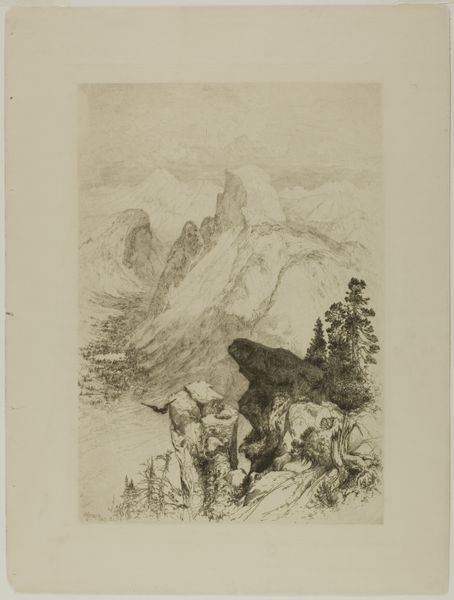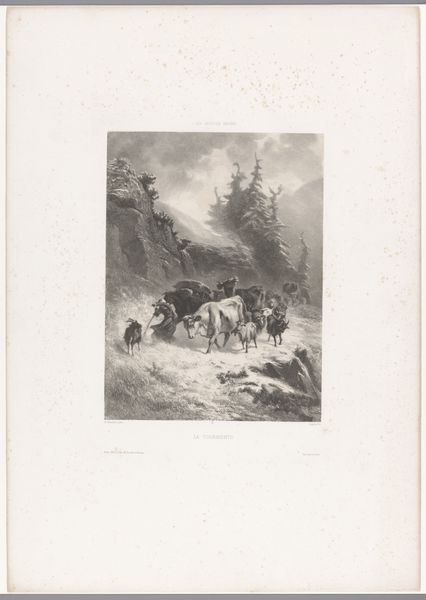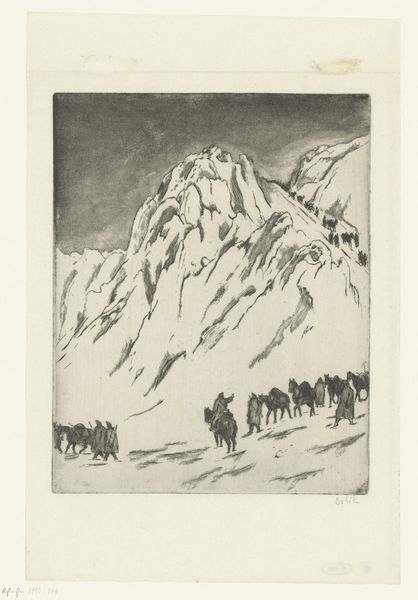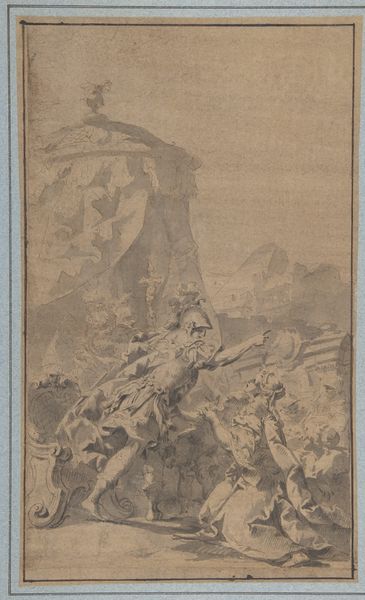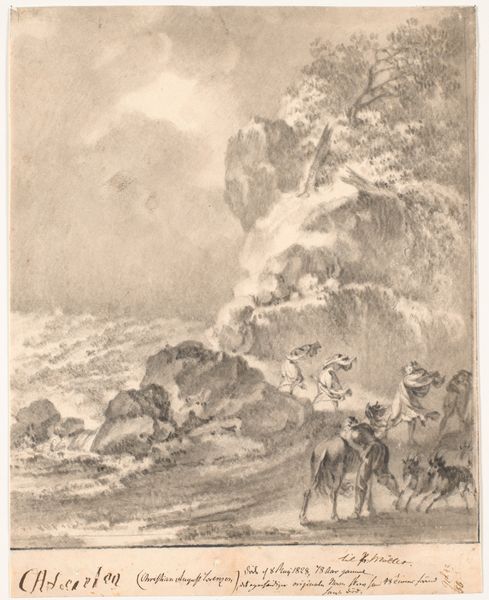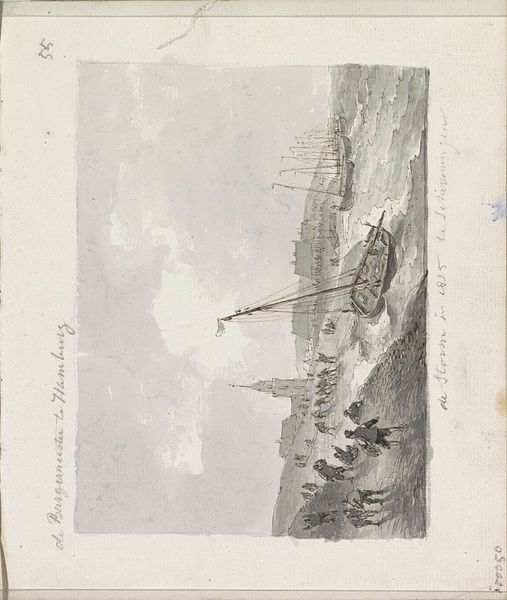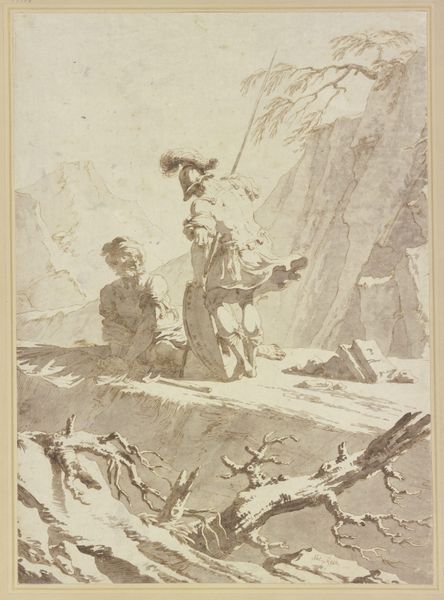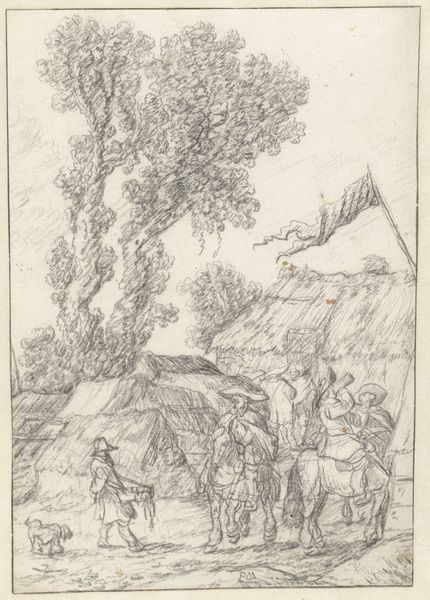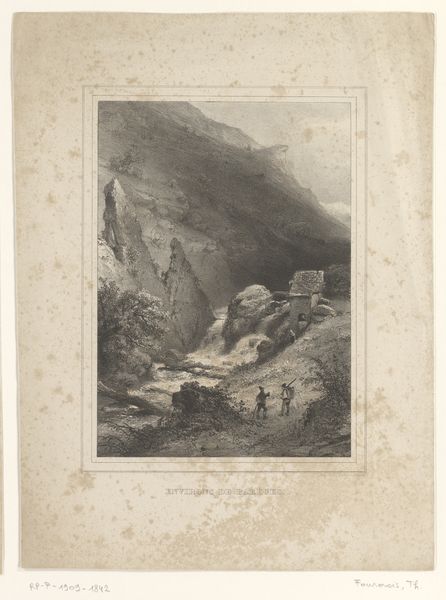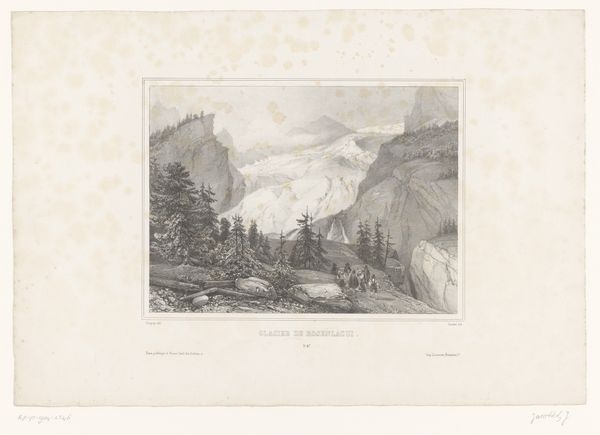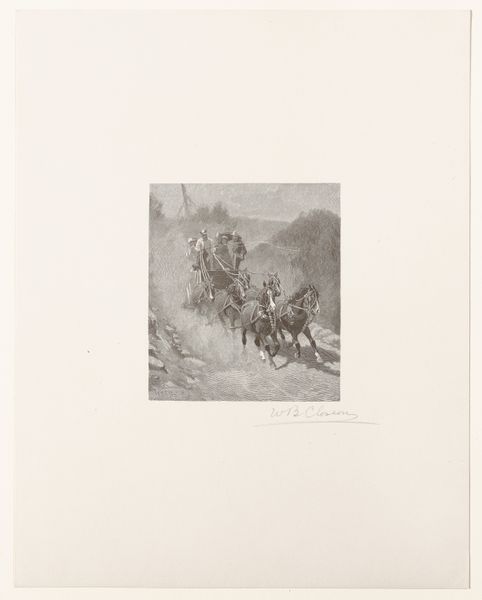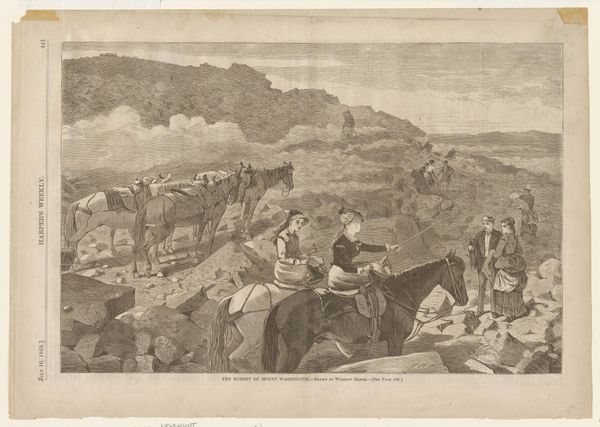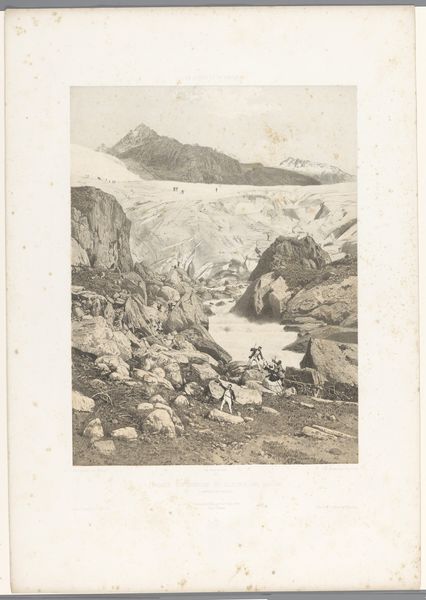
Titelprent voor: Histoire de Charlemagne, ca. 800 1832 - 1900
0:00
0:00
print, etching
#
medieval
#
narrative-art
# print
#
etching
#
landscape
#
etching
#
history-painting
Dimensions: height 160 mm, width 101 mm
Copyright: Rijks Museum: Open Domain
Curator: This is a title print for "Histoire de Charlemagne", or "History of Charlemagne," likely created between 1832 and 1900. It’s an etching by Adolphe François Pannemaker. Editor: My first impression is that the print, with its densely etched lines, creates a kind of hazy grandeur. The muted tones enhance a feeling of timelessness and historical distance. The stark composition definitely draws the eye upward to the title. Curator: Absolutely. The print medium, especially etching, allowed for widespread dissemination of this romanticized vision of Charlemagne. Pannemaker’s workshop would have played a role in reproducing these images. Think of the division of labor, the specialized skills, the network involved in producing something intended as a frontispiece. Editor: The linearity of the etching creates depth through contrasting light and shadow, wouldn’t you say? The mountains, while immense, seem soft, almost dreamlike. Notice how the engraver modulates the lines to shape volume, height, creating texture that invites the eye to travel into the picture plane, past the hordes making their passage. Curator: That's a great point. "Passage des Alpes", written beneath the scene, really illustrates how labor intersects with landscape. You have this grand historical subject matter – Charlemagne crossing the Alps – which at the time carried symbolic weight. It brings in a discussion of political power, landscape as obstacle and testament, and people’s endurance throughout history. Editor: To follow your point, look how Pannemaker rendered those masses—miniscule but meticulously drawn to underscore the daunting vastness and the magnitude of Charlemagne's undertaking. There’s drama within the greyscale contrast and also how the artist positions us, the viewers, in the foreground looking toward a central point in the distant mountain pass. Curator: It's fascinating how the landscape is not just scenery, but active context for the narrative of Charlemagne and the people moving within it. It's really speaking about landscape and humans through a distinctly class-conscious, early-industrial lens. Editor: Exactly. There’s an elegant formalism at work within those historical considerations you highlight, curator. Thanks to Pannemaker's refined manipulations of materials—metal, ink, paper—he makes the landscape alive and a powerful narrator, a testament of past glory. Curator: Indeed, looking closely, seeing how intertwined materials, narrative, and societal messaging become, gives you new respect for printmakers’ art and for reconsidering history beyond dominant, surface narratives. Editor: And seeing how he masterfully organized and formed this visual narrative underscores the importance of form as not just decoration, but content itself.
Comments
No comments
Be the first to comment and join the conversation on the ultimate creative platform.
